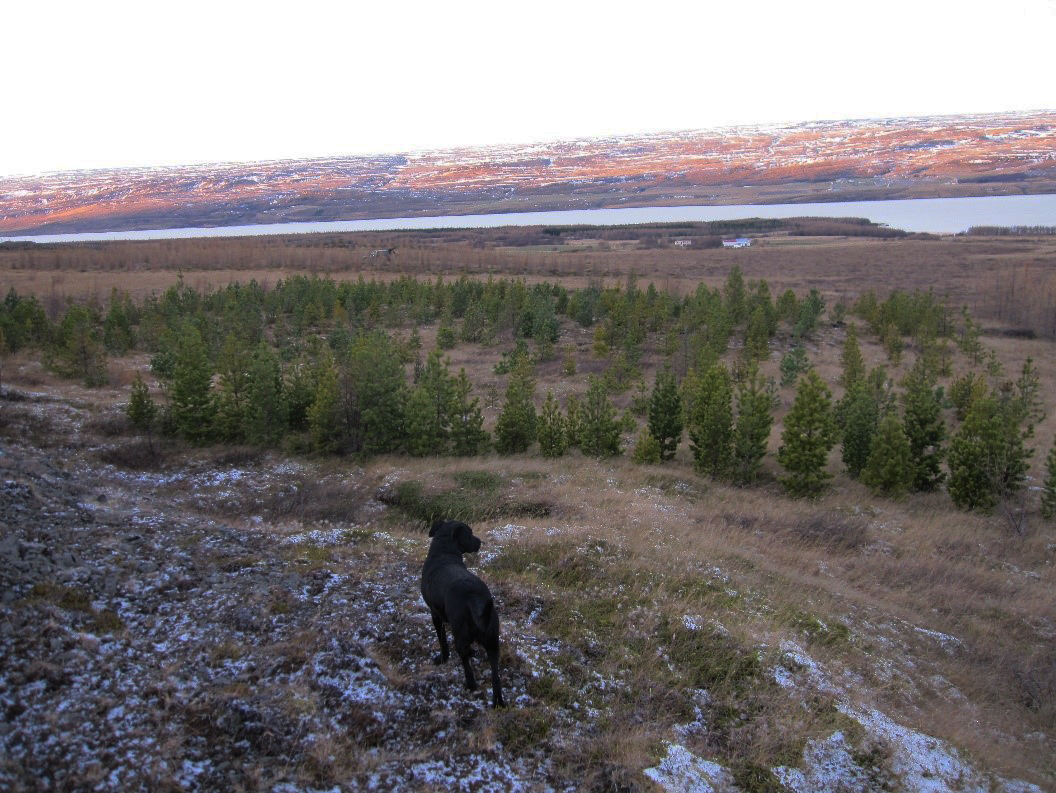Evidence of adaptation after an extreme selection event
26.03.2020
A severe insect pest epidemic may have changed the susceptibility of Scots pine (Pinus sylvestris) in Iceland to the pine woolly aphid. This could be the result of extreme selection pressure during the 1950s and 1960s, when the aphid damaged and killed the vast majority of Scots pines planted in Iceland.
 Scots pine was first introduced to Iceland early in the 20th century, with extensive plantings of material from the north of Norway starting in the late 1940s. Sometime before 1940, possibly in 1937, the pine woolly aphid (Pineus pini) was also introduced, probably on imported seedlings. The aphid spread to new plantations as they were established, and by 1954 seriously damaged specimens of Scots pine were apparent at many locations. The damage and mortality put a halt to the further use of Scots pine in Iceland.
Scots pine was first introduced to Iceland early in the 20th century, with extensive plantings of material from the north of Norway starting in the late 1940s. Sometime before 1940, possibly in 1937, the pine woolly aphid (Pineus pini) was also introduced, probably on imported seedlings. The aphid spread to new plantations as they were established, and by 1954 seriously damaged specimens of Scots pine were apparent at many locations. The damage and mortality put a halt to the further use of Scots pine in Iceland.
Now a team of researchers at the Icelandic Forest Service, Agricultural University and Soil Conservation Service have used this natural experiment to examine the response of different populations of Scots pine to infestation by Pine woolly aphid. Their results were recently published in Agricultural and Forest Entomology.
The study made use of provenance trials established in Iceland from 2004–2006. These trials brought in Scots pine material from Austria, Finland, Norway, Russia and Scotland, along with three Icelandic populations that had survived the aphid epidemic. The goal was to see whether conditions for Scots pine in Iceland have improved since the 1950s and if provenances other than the original northern Norwegian ones might be better adapted to Icelandic conditions.
 Measurements in 2017 showed a clear and extreme difference in aphid susceptibility between Icelandic provenances and imported ones.
Measurements in 2017 showed a clear and extreme difference in aphid susceptibility between Icelandic provenances and imported ones.
However, he added, at the moment it is not possible to decide between two alternative explanations. Natural selection has shifted the genetic structure of the population, but trees could either have greater resistance to the aphid or be better adapted more generally to local conditions, resulting in lower susceptibility.
The observed effects could also be partly epigenetic. Selection by the aphids could have caused a shift towards a lower growth rate, which is supported by the observation that in the non-Icelandic provenances, the trees that grew best were more susceptible to the aphid than those that grew more slowly. However, two of the three Icelandic provenances had very high growth rates and yet were least susceptible to the aphids. As a result of the provenance trials, in future the remaining Scots pine stands in Iceland will be used as the base population for seed supply and further breeding instead of using imported seed.

